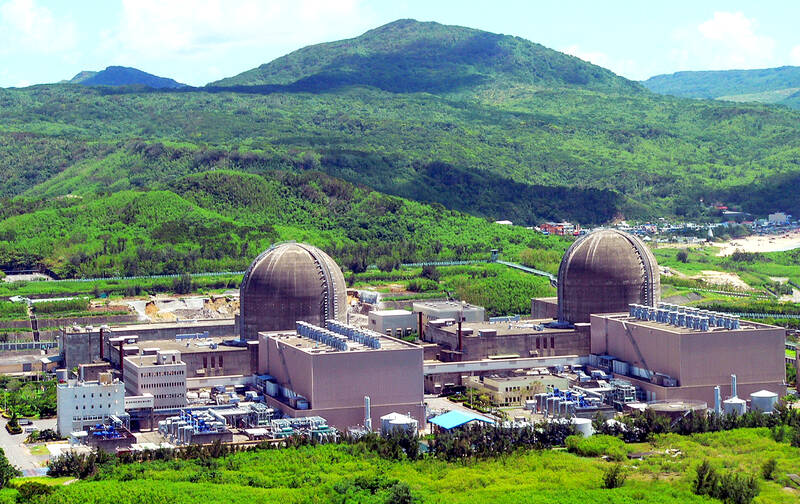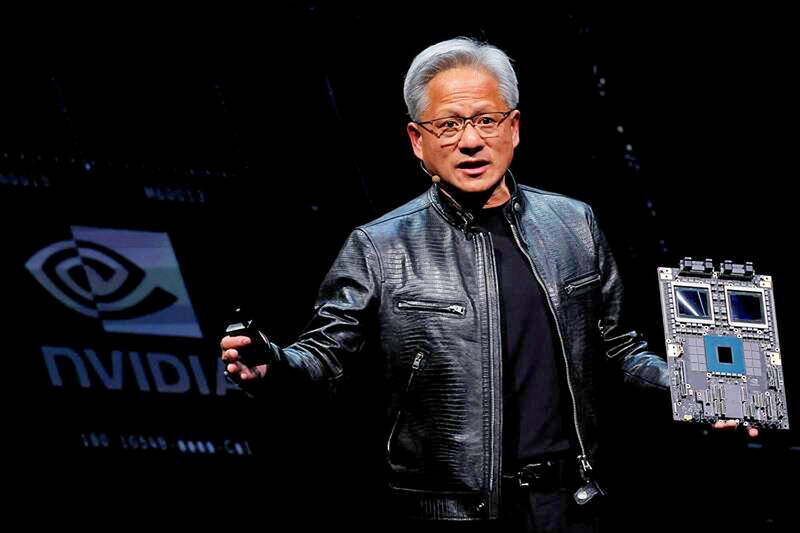Last week this paper published a translated editorial from its parent the Liberty Times calling for reconsideration of Taiwan’s nuclear-free stance (“The Liberty Times Editorial: Re-examine the nuclear-free stance”, Aug. 20, 2024). The editorial pointed out that fossil fuels still account for over 80 percent of energy production, renewables have been slow in coming and nuclear power may well be necessary.
That same week Taipower received permission to begin work on a dry storage facility in New Taipei City’s Wanli District (萬里) for the spent nuclear fuel from Guosheng Nuclear Power Plant. The spent fuel rods will be removed in 2026, and the plant’s decommissioning, a 25 year process, will begin.
No doubt this will set off another round of the nuclear “debate,” in which proponents of nuclear power will argue that Taiwan will be saved by the magic power of modular reactors, or restarting the current existing reactors, or reconstructing and then restarting the dead-on-arrival Fourth Nuclear power plant.

Photo courtesy of Taipower
POWER DEMAND
I expect there will be many surprised people when some sort of compromise on the reactors is reached, power begins to flow, and yet, the electricity supply remains tight. The reactors were never very reliable, and restarted reactors are likely to be less so. But the real issue isn’t the power supply or its (sometimes spotty) management: it’s power demand.
When new power goes in, power users will instantly expand their plans for its use, just as when new roads are built, people immediately put cars on them, replicating the traffic problem the new roads were meant to address. At present, the media is focused on the power demand for artificial intelligence, which is expected to boom starting next year as servers and data centers come online, pushing power demand up 3 percent in the next 10 years. Most of that will come in the next five years, far too soon for new nuclear plants to come online.

Photo: Reuters
In addition to AI, we can also expect an electric vehicle boom. Right now the industry is stuck in neutral as local institutions such as schools, businesses and housing communities resist infrastructure change. But over time that resistance will be overcome.
Hence, this situation in which we remain right at the power margin, the government has to constantly reassure people there’s enough power, and we have episodes of massive, costly blackouts, is likely to continue — like every other emergency — indefinitely.
A useful piece at Global Taiwan Institute last year by Jordan McGillis highlights the problems with our power system: a severe lack of resilience. As he observes, because Taiwan’s power is generated in the center and south but used in the north — symbolic of how Taipei treats the rest of Taiwan as a colony — the power system is too centralized. Hence, periodic electricity catastrophes are the inevitable result of the system’s overcentralization: “what should be isolated errors can instead become cascading island-wide cataclysms.”
The government is attempting to handle this in two ways, says McGillis. The first is a 10-year resilience implementation program. The second is isolation of the industrial parks from the supply system in the event of another (inevitable) power catastrophe.
These programs, including restarting the nuclear power plants, are stopgaps that address important issues, but they won’t solve the electricity problem. The electricity problem isn’t a lack of power, but power management: the government’s policy is to manage supply, but not demand. Instead, Taiwan suffers from wasteful, excess demand caused by Taiwan’s artificially low prices for electricity.
CHEAP ELECTRICITY
How low are they? According to Taipower’s own data, Taiwan has the third lowest prices in the industrialized world for industrial electricity, and fifth-lowest for residential electricity. Industrial electricity is cheaper in Taiwan than in China and Korea.
Low electricity prices also drive Taiwan’s high carbon emissions.
The Chinese National Federation of Industries (CFNI), a key business lobby in Taiwan, has long fought for subsidized electricity and water. The discourse on our electronics industry of hard work and human capital progress hides the extent to which these and other industries depend for their profits on subsidized electricity and water.
Agriculture as well: electricity for groundwater pumps is cheap. In the Chuoshui River alluvial fan area of Changhua and Yunlin, according to government data cited in local research, there are over 170,000 such pumps, causing severe subsidence. From the power perspective, our agricultural industry is actually a mining industry that converts cheap electricity into vegetables.
This means that for the business lobby, “adding nuclear power to the mix,” a phrase one hears often, is not about reducing carbon emissions or moving into the future. As local researchers Chou Kuei-Tien (周桂田) and Liou Hwa-Meei (劉華美) point out in a marvelous paper on carbon tax that reviews these issues, “adding nuclear power to the mix” enables local manufacturers to maintain the current economic arrangements under which gasoline, electricity, water, interest rates and wages are all kept artificially low, for the sake of the profits of a few people who are already gazillionaires.
Let me say that again: nuclear power is not about achieving a net zero carbon economy. It’s about locking in current carbon emissions levels for the sake of big business profits. If the nuclear plants are restarted, businesses buy another decade of cheap electricity, and our zombie firms another decade of shuffling, brainless life.
The CNFI has pressured the government, criticizing it for the “five lacks” of land, water, power, skilled workers and manpower. Like the discourse around nuclear power, this is cant intended to maintain the current economic arrangements, a demand for more subsidies.
If industry is truly concerned about skilled workers and manpower, nothing prevents it from starting training institutes and offering human resources policies aimed at stimulating birth rates. Nothing prevents CNFI from forming pools to purchase land at market rates and developing industrial and business districts. After all, private businesses, faced with power issues, have already taken action with the Formosa Plastics’ plant at Mailiao and Taiwan Cement’s Heping Power Plant, both coal-fired.
What restarting nuclear power plants really means is that the economy will keep churning out too much carbon, driven by low electricity prices. As many observers have noted, low power prices make Taiwan firms inefficient. Moreover, coupled with the low interest rates here that sustain an ecology of zombie firms that cannot innovate because they do not make enough money, in reality, the CNFI is not arguing for economic upgrades, but the opposite: a low-innovation, inefficient, high carbon economy that will be a catastrophe for the global environment while doing nothing for the living standards of its people.
But somewhere, someone who already has too much money will be making another huge lump. And that’s what’s important.
Notes from Central Taiwan is a column written by long-term resident Michael Turton, who provides incisive commentary informed by three decades of living in and writing about his adoptive country. The views expressed here are his own.

The Taipei Times last week reported that the rising share of seniors in the population is reshaping the nation’s housing markets. According to data from the Ministry of the Interior, about 850,000 residences were occupied by elderly people in the first quarter, including 655,000 that housed only one resident. H&B Realty chief researcher Jessica Hsu (徐佳馨), quoted in the article, said that there is rising demand for elderly-friendly housing, including units with elevators, barrier-free layouts and proximity to healthcare services. Hsu and others cited in the article highlighted the changing family residential dynamics, as children no longer live with parents,

It is jarring how differently Taiwan’s politics is portrayed in the international press compared to the local Chinese-language press. Viewed from abroad, Taiwan is seen as a geopolitical hotspot, or “The Most Dangerous Place on Earth,” as the Economist once blazoned across their cover. Meanwhile, tasked with facing down those existential threats, Taiwan’s leaders are dying their hair pink. These include former president Tsai Ing-wen (蔡英文), Vice President Hsiao Bi-khim (蕭美琴) and Kaohsiung Mayor Chen Chi-mai (陳其邁), among others. They are demonstrating what big fans they are of South Korean K-pop sensations Blackpink ahead of their concerts this weekend in Kaohsiung.

Oct 20 to Oct 26 After a day of fighting, the Japanese Army’s Second Division was resting when a curious delegation of two Scotsmen and 19 Taiwanese approached their camp. It was Oct. 20, 1895, and the troops had reached Taiye Village (太爺庄) in today’s Hunei District (湖內), Kaohsiung, just 10km away from their final target of Tainan. Led by Presbyterian missionaries Thomas Barclay and Duncan Ferguson, the group informed the Japanese that resistance leader Liu Yung-fu (劉永福) had fled to China the previous night, leaving his Black Flag Army fighters behind and the city in chaos. On behalf of the

I was 10 when I read an article in the local paper about the Air Guitar World Championships, which take place every year in my home town of Oulu, Finland. My parents had helped out at the very first contest back in 1996 — my mum gave out fliers, my dad sorted the music. Since then, national championships have been held all across the world, with the winners assembling in Oulu every summer. At the time, I asked my parents if I could compete. At first they were hesitant; the event was in a bar, and there would be a lot